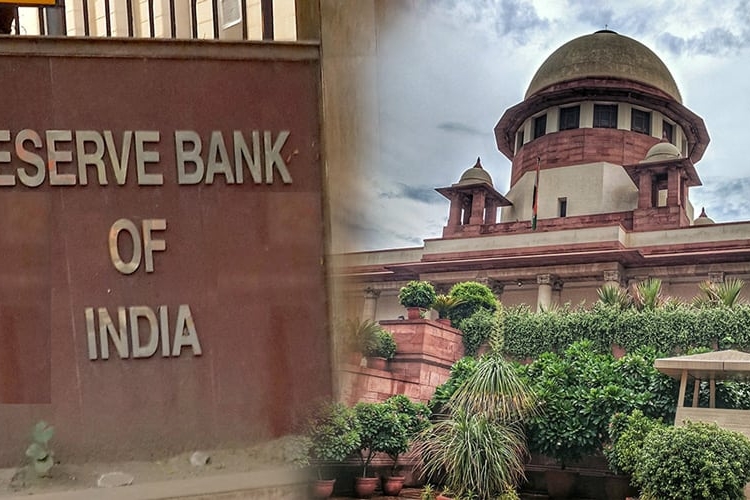RBI Circular on Stressed Asset and SC take on it
RBI Circular on Stressed Asset and what SC had to say
In news: The Supreme Court has rejected an order from the RBI’s circular on a resolution of stressed assets revised framework — commonly known as February 12 circular.
According to the aforementioned circular, lenders had to classify a loan account as ‘stressed’ if there was even a day of default. The bankers had to mandatorily refer all accounts with over Rs 2,000 crore loans to the National Company Law Tribunal (NCLT) or the bankruptcy court if they failed to resolve the problem within 180 days of default. Added to that, the lenders had to file an insolvency application under the Insolvency and Bankruptcy Code 2016 within 15 days of the completion of the 180-day deadline. The circular also withdrew the loan resolution mechanisms the RBI had implemented, such as Corporate Debt Restructuring and Strategic Debt Restructuring
What is a stressed Asset?
Stressed assets = NPAs + Restructured loans + Written off assets
What is an NPA?
A loan whose interest and/or instalment of principal have remained ‘overdue ‘ (not paid) for a period of 90 days is considered as NPA.
But NPA alone doesn’t tell the whole story of bad asset quality of loans given by banks. Some of the loans are restructured by banks by giving a further opportunity to the borrower if they default. This opportunity is in the form of an extended time period for repayment and a reduced interest rate or such soft conditions. Hence a new classification is made in the form of stressed assets that comprise restructured loans and written off assets besides NPAs.
Restructured asset or loan are that assets which got an extended repayment period, reduced interest rate, converting a part of the loan into equity(strategic debt restructuring), providing additional financing, or some combination of these measures. Corporate Debt Restructuring Mechanism allows restructuring of loans.
Written off assets are those the bank or lender doesn’t count the money borrower owes to it. The financial statement of the bank will indicate that the written off loans are compensated through some other way. There is no meaning that the borrower is pardoned or got exempted from payment
Insolvency and Bankruptcy code
A plea for insolvency is submitted to the adjudicating authority (NCLT in case of corporate debtors) by the lender mostly. The maximum time allowed to either accept or reject the plea is 14 days. If the plea is accepted, the tribunal has to appoint an Insolvency Resolution Professional (IRP) to draft a resolution plan within 180 days (extendable by 90 days). following which the Corporate Insolvency Resolution process is initiated by the court. For the said period, the board of directors of the company stands suspended, and the promoters do not have a say in the management of the company. The IRP, if required, can seek the support of the company’s management for day-to-day operations. if the CIRP fails in reviving the company the liquidation process is initiated(ie; assets and properties are restructured)
Analysis
The SC quashed the Feb Circular yesterday. The effect of the circular was bad especially to sectors such as power sugar, shipping and infrastructure. With the verdict, India’s banks won’t have to categorise around ?1.8 trillion worth of loans to 34 coal-based thermal power plants as “non-performing”. The relief also extends to ?840 billion worth of loans to companies in other sectors such as sugar, shipping and infrastructure.
If the verdict had gone against them, then banks would have had to provision assets against these loans. The verdict comes more than a year after the RBI released a circular on February 12th, 2018 that mandated banks to recognise loans of at least ?50 million as having gone bad even in the event of a one-day default.
Further still, the circular gave them not more than 180 days to approach a bankruptcy tribunal for the resolution of the said loan if the exposure was more than ?20 billion. The rationale behind the circular was to tighten the noose on cash-strapped companies and force banks to account for bad loans immediately. It did lead to a dramatic reduction in defaults, as loans were borrowers did not pay instalments on time fell by 60% to ?551 billion between June and September 2018.
However, the order ran into an obstacle as power firms, along with shipping companies and sugar and textile producers, contested the one-day default norm and 180-day resolution period. The above sectors are always riddled with structural delays in payments and dues as well known (in fact power discomm yojana was aimed at reducing this gap)
The companies in the aforementioned sectors were eventually granted interim relief in September 2018 pending a full hearing. The interim relief was aimed at helping banks restructure and offload their loans to struggling companies. Throughout the past year, the RBI had refused to dilute the circular, maintaining its necessity in cleaning up the banking sector which was one of the main contentious issues with riddled between RBI and the government.
The status quo order will protect power sector companies from insolvency proceedings, which was the immediate threat. It should also give time to these companies and lenders to complete ongoing resolution processes initiated.


 "UPSC-2026-PRELIMS COMBINED MAINS FOUNDATION PROGRAMME" STARTS WITH ORIENTATION ON FEB-10
"UPSC-2026-PRELIMS COMBINED MAINS FOUNDATION PROGRAMME" STARTS WITH ORIENTATION ON FEB-10